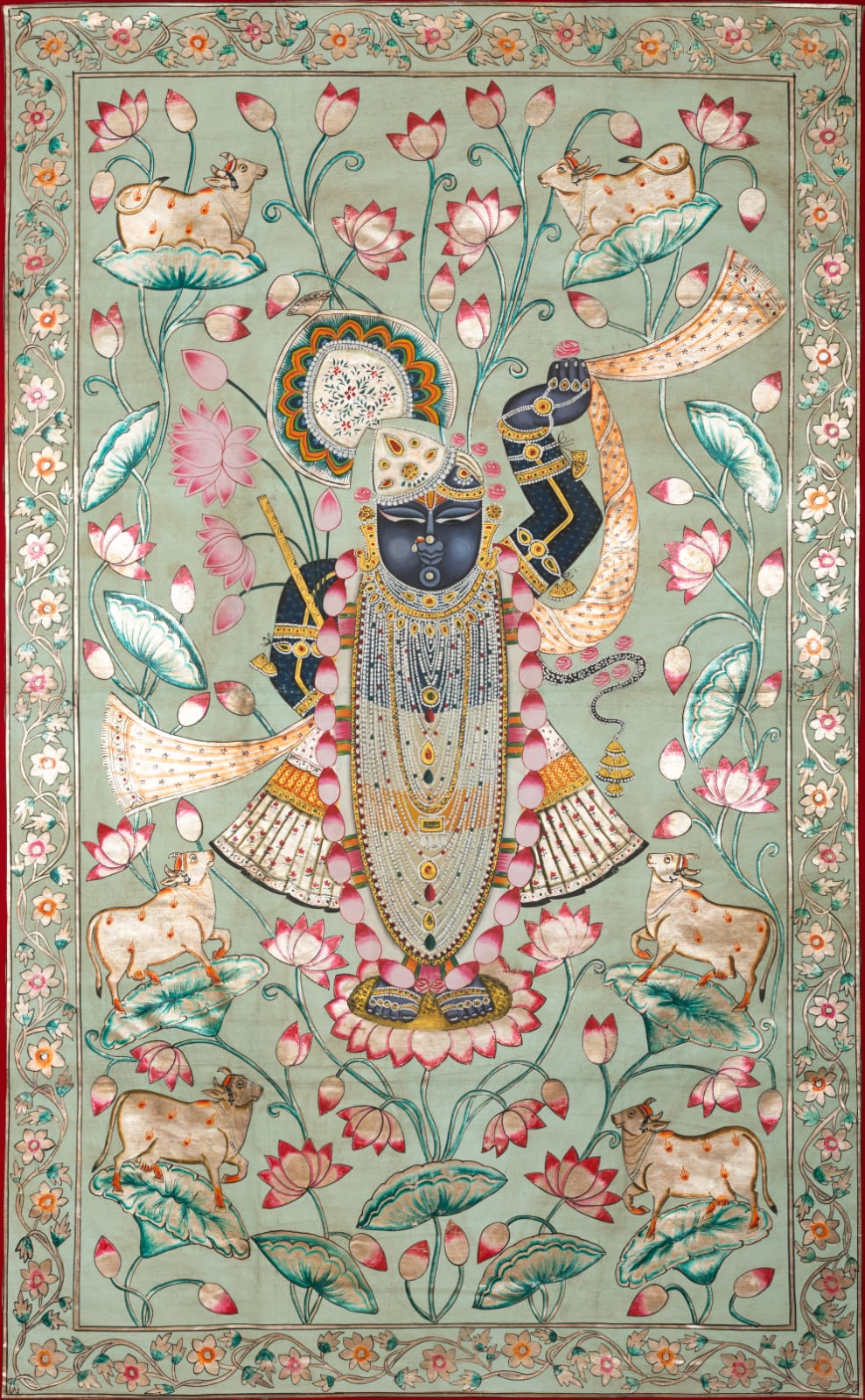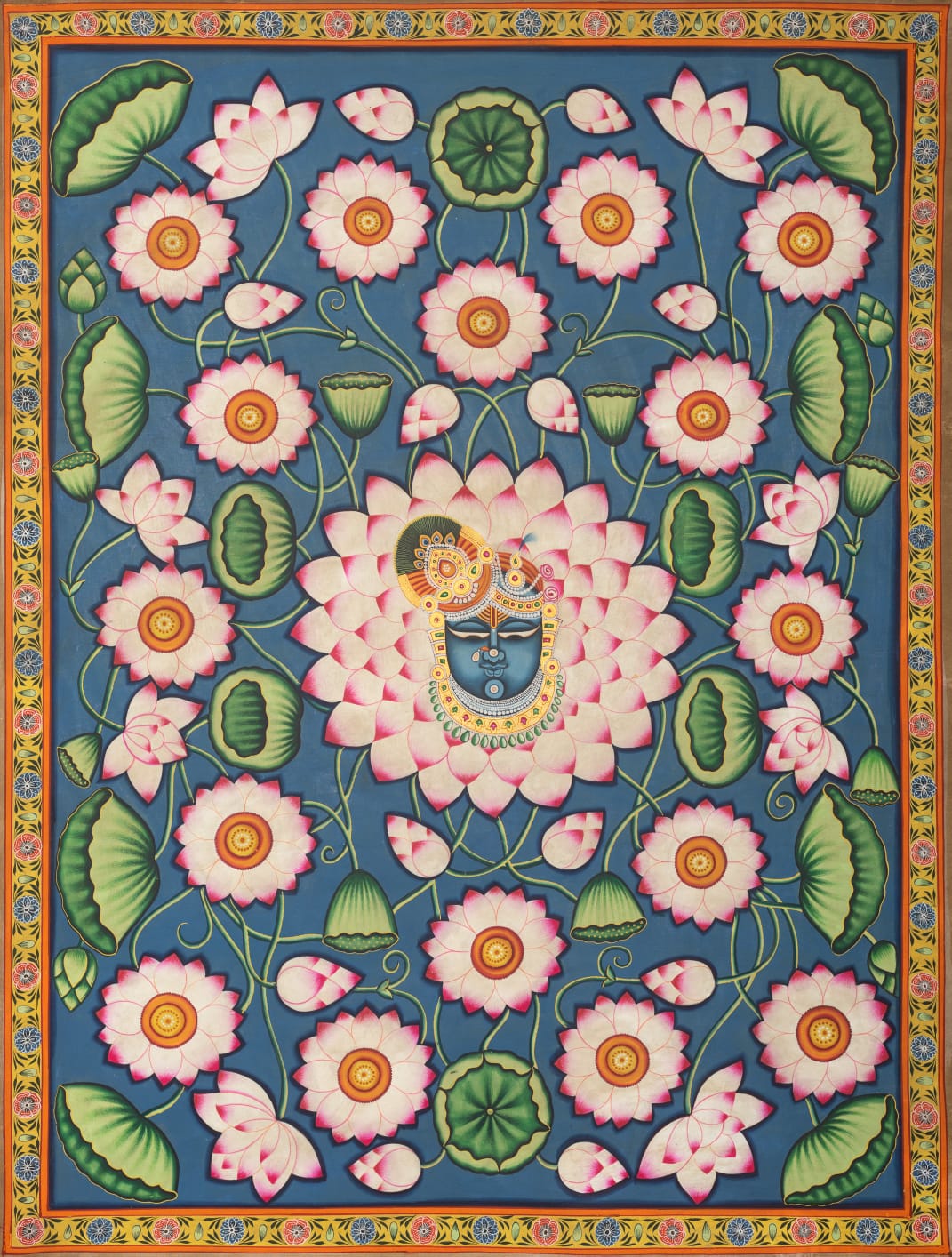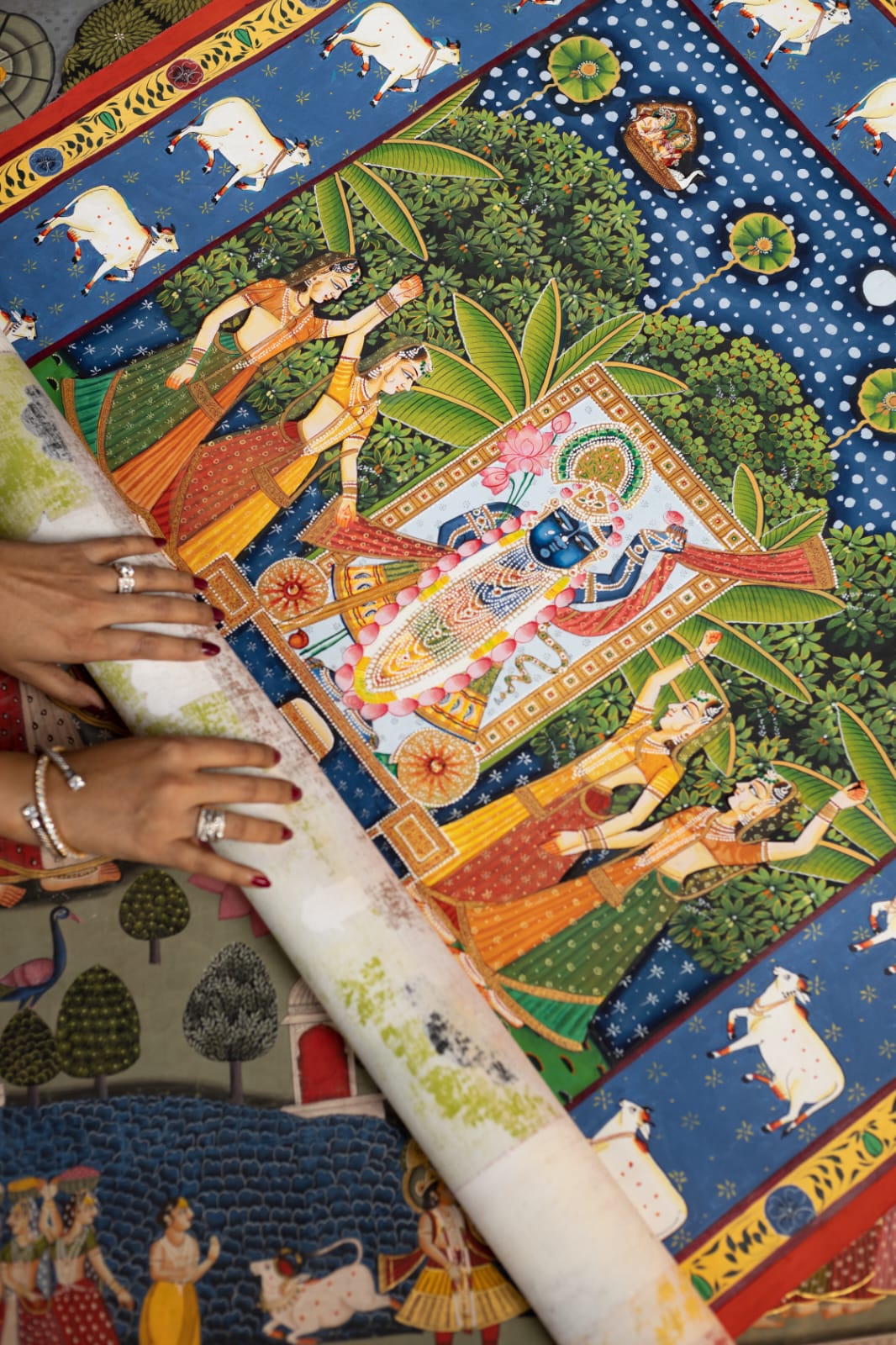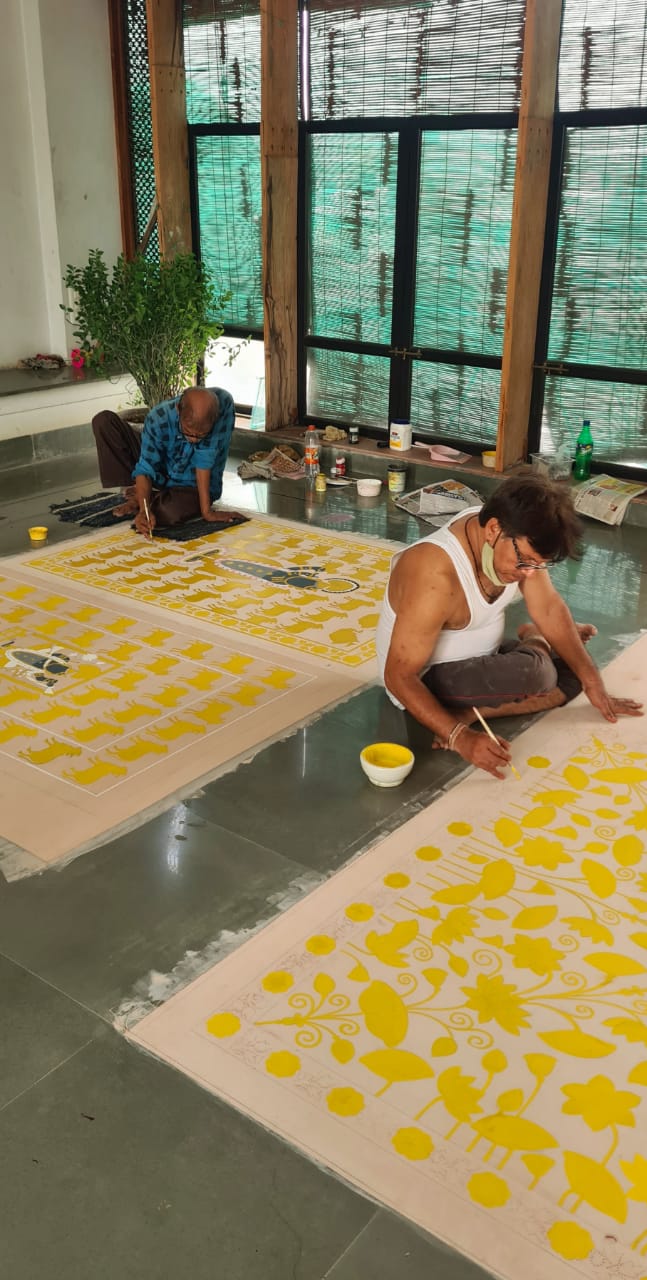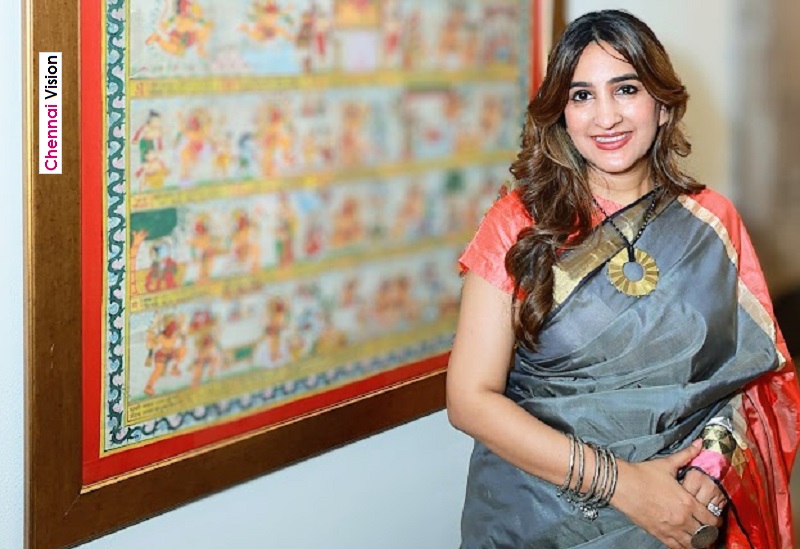Artistic Juxtaposition: ‘RACH – रच’ Harmonises Balance of Traditional Pichwai Paintings & Heritage Art in Contemporary Spaces
Rachita Choudhary is driven by a passion for indigenous art forms both as collector and connoisseur.
This has led her to create the eponymous brand ‘RACH – रच’, (a name stemming from the Sanskrit “Rachayita” or creator) which dedicates itself to the magnificent folk art of the Mewar region in Rajasthan.
Each piece curated at ‘RACH – रच’ showcases a timeless fusion of contemporary style and traditional craftsmanship, offering art enthusiasts a glimpse into the rich cultural tapestry of India.
Rachita’s deep-rooted connection to Shekhawati, her ancestral homeland in Mawar fuels her mission to revive and preserve the sacred art of Pichwai. Her diverse background spanning interior design, visual merchandising and financial management, with an active involvement in her family-owned textile export company enables her to sustain this mission to preserve and represent this endangered art form.
What sets ‘RACH – रच’ apart is not just its exquisite collection of Pichwai art but its dedication to authenticity and deeper appreciation for India’s cultural heritage.
Pichwai, Pichhvai, Pechhavai, translates to Picch-Wais meaning “behind the idol” or “hang from back” and refers to the exquisite paintings that adorn the walls of temples dedicated to Lord Krishna and Gopinathji, particularly in the Shrinathji temple of Nathdwara. These artworks are vibrant backdrops for the deity’s idol form and are an integral part of the temple’s rituals and festivities. Pichwai art finds its roots in the 15th century when the deity Shrinathji was moved from Vrindavan to Nathdwara as protection against Mughal invasions. These intricately hand-painted pieces of art commemorate the various facets of Lord Krishna’s Leela.
The Pichwai painting is created on a piece of hand-spun cotton; a laborious process that demands immense skill and precision. The artisan first sketches the outline of the composition with charcoal. Then, he/she meticulously fills in details using vibrant colors made from vegetable dyes and natural brushes. Saffron, kamela (rose), turmeric, Neel (indigo), kajal, red lac, gheru and silver are some of the significant sources of the natural colors used. At times, paintings are enhanced using gems and crystals. The application of gold and silver leaf, that gives the painting its signature radiance is done with great care and is the most intricate part of the process.
Rachita considers herself a storyteller as much as a heritage conservator, and her most important ‘story’ is about the discovery and appreciation of the magic of exhibiting indigenous, traditional art in contemporary spaces. Buyers tend to grapple with this apparent aesthetic contradiction. It is Rachita’s firm belief that even as shifting artistic trends often fade into irrelevance and even obscurity, heritage pieces are powerful representations of rich tradition, with an appeal that transcends time. Many of us are fortunate enough to possess family heirlooms, photographs and other items of vintage art-forms that may be endangered or no longer practiced. Art pieces not only pay homage to the family’s regional roots but also infuse emotions in each space.
Harmonizing traditional art with contemporary spaces in interior design creates a balanced and visually appealing environment that blends the charm of the past with the functionality and style of the present.The juxtaposition sets the artwork apart, giving it a moment in the sun, without overshadowing the furniture style .The whole room gets a new freshness. Resurgence and harmonizing traditional art within a contemporary setting is not just about aesthetics; it’s about creating a narrative that reflects the collective memory and evolving culture of a space. Ancient techniques like Pichwai, Madhubani painting, Kalamkari, and Warli, once at the brink of obscurity, are finding new life on contemporary canvases.
‘RACH – रच’ offers a tantalizing range of carefully curated works of ‘objets d’art, created by skilled artisans or discovered in old collections.
However, it remains a primary aim of Rachita to share her knowledge of the Pichwai and the Shekhawati region with art lovers and connoisseurs indeed prior to any procurement or potential investment by them in any available, or bespoke works.
For Rachita, conservation and preservation of heritage encompasses a vast spectrum of buildings, art, religion, history and the cultural and natural environment. Her mission is to give dignified voices and enhanced livelihoods to the supremely skilled artisans who are more often than not, the last practitioners of ancient art forms. In the process, there blossoms a deep sense of identity and continuity; an existential requisite for future generations of both artists and communities in an ever-changing, increasingly ever changing world.
https://www.instagram.com/pichwai.rach
